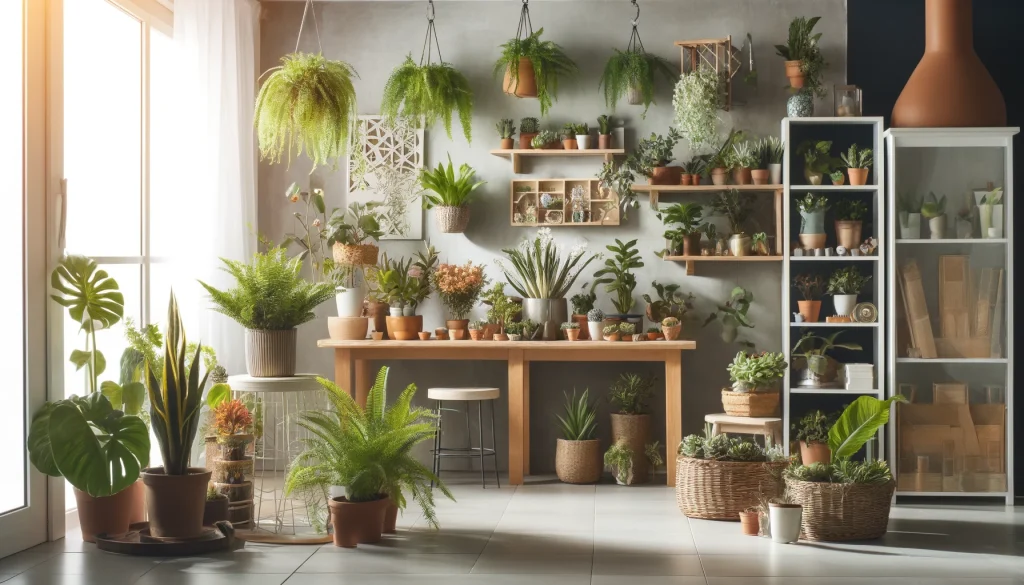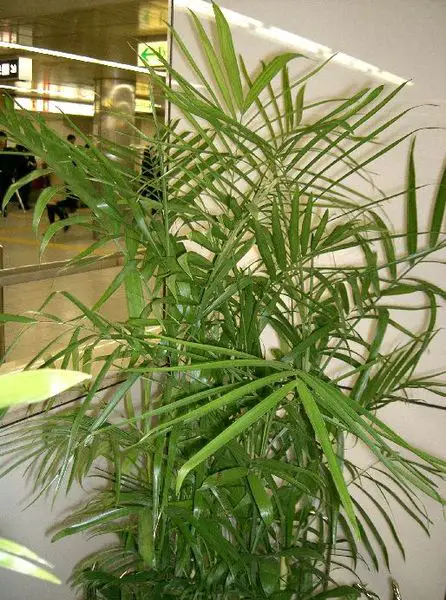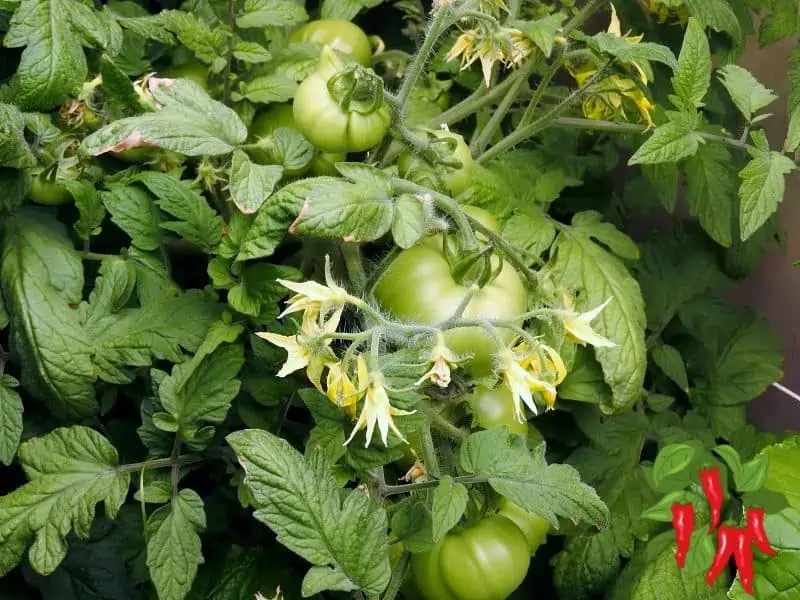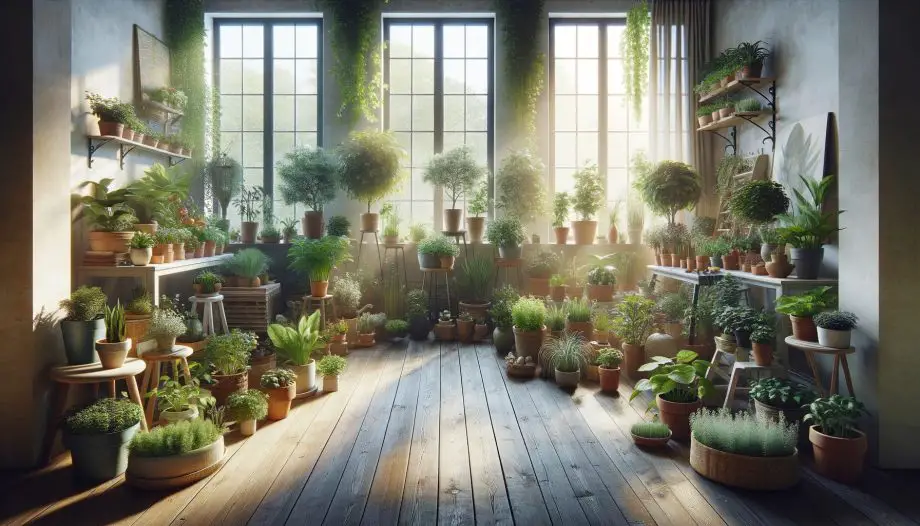This post contains affiliate links. If you buy something from one of our links we may earn a commission. Thanks

Wondering how to brighten up your space and boost your well-being with minimal effort? Dive into the 10 benefits of indoor plants and discover how these green friends can transform your home and health. Let’s grow a little happiness right where we live!
10 Benefits of Indoor Plants Key Takeaways
- 10 benefits of indoor plants include:
- improving air quality,
- enhancing mood,
- reducing stress,
- increasing creativity,
- promoting healing,
- providing fresh air,
- boosting productivity,
- adding humidity,
- reducing noise levels,
- enhancing decor.
- Indoor plants bring a wealth of health and aesthetic advantages to any space.
10 Benefits of Indoor Plants
Howdy folks! Ever noticed how a room changes with a bit of greenery?
Indoor plants aren’t just decorations; they’re an essential part of a healthy, stylish living space.
As more people bring the outdoors in, let’s explore how these leafy friends are not just pleasing to the eye but good for our health too.
Enhancing Home Aesthetics
- Visual Appeal: Plants add color, shape, and life to any room, complementing any decor style.
- Natural Art: With their unique forms and textures, plants can serve as living art, making them versatile decor elements.
Boosting Health and Well-being
- Air Quality: Plants can remove toxins from the air, making it cleaner for us to breathe.
- Humidity: By releasing water vapor during transpiration, plants naturally increase indoor humidity, which can help reduce the prevalence of dry skin, colds, and sore throats.
- Stress Reduction: Studies have shown that having plants indoors can lower stress and enhance feelings of well-being, making them perfect for homes and workspaces.
- Productivity Boost: Having plants in workspaces has been linked to increased creativity and productivity, possibly due to their calming effect and ability to reduce noise levels.
Practical Benefits
- Improved Acoustics: Plants can help dampen noise within large spaces, making them ideal for open-plan areas.
- Healthier Eating: Growing edible plants like herbs and small vegetables indoors can encourage healthier eating habits by providing fresh produce.
- Therapeutic Gardening: The act of caring for plants can be a therapeutic activity, offering emotional satisfaction and a sense of achievement.
Indoor plants pack a whole bunch of perks that go way beyond just looking pretty.
They bring a splash of nature into our city lives, spicing up both the look and feel of our spaces.
Whether you’re jazzing up your home or office, adding a few plants can really switch things up.
Why not start bringing some green buddies into your indoor spots today?
1. Improved Air Quality
Ever wondered if those leafy greens around your home do more than just add a dash of color?
Turns out, indoor plants are pretty helpful when it comes to cleaning up the air we breathe!
They’re not just for decor, they’re natural air purifiers. Let’s dive into how these silent guardians keep our homes fresh.
Air-Purifying Superstars
- Nature’s Filters: Plants absorb common indoor pollutants like formaldehyde and benzene, which are found in many household products. This natural filtration system helps create a healthier living environment.
- Spider Plants: Exceptionally good at removing toxins and very easy to maintain. See them on Amazon.

- Snake Plants: Known for their efficiency in filtering out formaldehyde, perfect for bedroom spaces as they also release oxygen at night.

- Spider Plants: Exceptionally good at removing toxins and very easy to maintain. See them on Amazon.
Live Snake Plant, Sansevieria trifasciata Superba, Indoor House Plant in Pot
-
- Peace Lilies: Not only do they look beautiful with their white blooms, but they also tackle ammonia and other volatile organic compounds.
Peace Lily Plant, Spathyphylum, Live Indoor Plant, 4″ Diameter Pot
The Science Behind the Green
- NASA’s Findings: According to research by NASA, certain plants are particularly good at purifying the air. Spider plants and snake plants top this list, known for their exceptional ability to remove harmful toxins.
By incorporating these natural purifiers into your indoor spaces, you’re not just decorating; you’re enhancing the air quality around you.
- So why not bring a little more green indoors and breathe easier knowing your leafy friends have got your back?
2. Stress Reduction
Isn’t it relaxing just being around a splash of green? Well, it’s not just in your head. There’s science to back up how plants can actually help reduce stress and calm us down.
The Calming Power of Plants
- Natural Stress Relievers: Studies have found that being around plants can lower blood pressure, reduce stress, and enhance overall well-being. It turns out that just having a view of greenery can significantly decrease stress levels in both home and office environments.
Psychological Benefits
- Mood Enhancement: Interacting with plants, whether it’s watering them or just enjoying their presence, has been shown to increase happiness and decrease feelings of anxiety. Caring for something living adds purpose and satisfaction, contributing positively to mental health.
- Calming Effects: The soothing colors and textures of plants can help create a peaceful atmosphere. This is why you’ll often find indoor plants in spaces meant for relaxation like spas and yoga studios.
By introducing plants into your daily surroundings, you can tap into their natural power to soothe and calm.
So next time you’re feeling a bit tense, try spending some time with your leafy friends—it might just be the breath of fresh air your mind needs!
3. Enhanced Mood and Emotional Well-being
Did you know that your leafy companion could be the secret to a sunnier disposition?
Plants do more than just brighten up a room; they can significantly uplift your mood and help combat anxiety and depression.
Boosting Your Spirits Naturally
- Mood Enhancers: Just like a sunny day can lift your spirits, so can a room full of lively plants. Studies show that people who spend time around plants tend to have better moods and lower levels of stress and anxiety.
- Anxiety Reduction: The presence of plants in work and living spaces is known to reduce tension and help people feel more relaxed. Just seeing green can make you feel more at peace.
Aromatic Benefits
Lavender Live Edible Aromatic Herb Plant
- Lavender: Known for its soothing aroma, lavender can help calm the mind and reduce anxiety. Having a pot of lavender in your home not only adds a touch of purple but also fills the space with its calming scent.
- Jasmine: Its sweet fragrance is often linked to reduced anxiety levels and improved sleep quality, making it a perfect bedroom companion.
Jasmine Live Plant, 1 Gallon Pot, Includes Care Guide
Bringing plants like lavender and jasmine into your home isn’t just about adding beauty.
These plants provide a natural, aromatic boost to your emotional well-being, making them invaluable allies in your quest for a happier, healthier you.
So why not add a few to your space and breathe a little easier?
4. Better Sleep
Ever thought about turning your bedroom into a small jungle? It turns out, certain plants not only spruce up your sleep space but might also help you catch some better Z’s!
Nature’s Air Purifiers
- Oxygen Boosters at Night: Some plants, like aloe vera and peace lilies, actively release oxygen at night, which can improve air quality and help you breathe easier while you sleep. This is especially beneficial in enclosed spaces where air circulation may be limited.
- Humidity Helpers: These plants also help increase humidity levels in the air, which can be particularly soothing in dry climates or during dry seasons, reducing the likelihood of dry skin, sore throats, and colds.
The Calm of Green
- Relaxing Atmosphere: There’s something inherently calming about being surrounded by greenery. Having plants like peace lilies in your bedroom can create a tranquil environment, conducive to unwinding and relaxing after a long day.
- Sleep Quality Improvement: The mild detoxifying properties of these plants and their subtle, natural scents can also contribute to a more restful night’s sleep.
Peace Lily, Indoor Plant with Flowers, Easy to Grow Houseplant in Decorative Pot
Integrating plants like aloe vera and peace lilies into your sleep routine might just be the natural sleep aid you’ve been looking for.
Not only will they help purify the air and increase oxygen levels, but they’ll also transform your bedroom into a serene, inviting space that encourages relaxation and rest.
Why not give it a try and perhaps sleep a little more soundly tonight?
Live Indoor Aloe Vera Plant, Easy to Grow Succulent
5. Increased Productivity and Creativity
Greening up your workspace isn’t just about aesthetics; it’s about amping up your work game too.
Believe it or not, those peaceful plants sitting quietly in the corner of your office could be boosting your brain power!
Enhancing Work Environments
- Boost in Concentration: It turns out, having plants around can help reduce distractions. By moderating noise levels and reducing excessive stress, plants help create a more comfortable environment for concentration.
- Spark in Creativity: The presence of plants can also inspire creativity. Their natural beauty and relaxing effects provide a mental break, allowing creative thoughts to flow more freely.
Scientific Backing
- Improved Job Satisfaction: Studies have shown that offices with indoor plants see higher levels of job satisfaction among employees. This sense of well-being translates into more productive and motivated staff.
- Reduced Sick Days: Research indicates that workspaces with plants have fewer cases of sick days. Plants contribute to improved health by enhancing air quality and increasing feelings of well-being.
By bringing plants into your office, you’re not just decorating. You’re investing in a happier, healthier, and more productive workspace.
So why not add a potted friend or two to your desk and see if you feel the difference in your day-to-day work life?
6. Noise Reduction
Did you know your green buddies can also keep things quiet? That’s right, plants are not only great for decor and air quality, but they also play a role in reducing noise pollution in your indoor spaces.
How Plants Quiet Down Spaces
- Sound Absorption: Plants are natural sound absorbers. Their leaves, stems, and branches can absorb sound frequencies, helping to dampen noise pollution around them.
- Deflection and Refraction: Besides absorption, plants can deflect and refract sound waves. When sound hits a flexible material, like a leaf, the material vibrates and changes the path of the sound wave. This can help reduce the noise level in busy areas.
Effective Noise-Reducing Plants
Rubber Plant Ficus Elastica ‘Burgundy’ in 6in. Grower’s Pot
- Rubber Plants: Their large, broad leaves are particularly effective at absorbing and deflecting sound, making them a great choice for offices or living rooms near busy streets.
- Weeping Figs: Another plant with broad leaves, weeping figs can help to control noise, especially in spaces with hard surfaces that tend to echo sounds.
Incorporating these plants into your indoor environments can not only spruce up the space but also make it a quieter, more serene place to work and relax.
So, if you’re looking for a natural way to reduce noise, consider adding a few broad-leafed plants to your collection.
7. Faster Healing and Improved Physical Health
Believe it or not, your leafy companions could be the unsung heroes in speeding up recovery times and boosting physical health.
It’s not just folklore; there’s real science backing the healing powers of plants.
Plants and Healing
- Speeding Recovery: Studies have shown that patients in hospital rooms with plants or views of gardens tend to recover faster than those without. The presence of plants has been linked to reduced postoperative pain, anxiety, and fatigue in patients, leading to improved recovery outcomes and shorter hospital stays.
Benefits to Respiratory Health
- Air Quality and Humidity: Plants improve air quality and increase humidity levels, which can have a direct impact on respiratory health. Enhanced air quality reduces the prevalence of dry air that can lead to irritation in the respiratory tract, thus providing relief for conditions like asthma and allergies.
- Natural Humidifiers: By releasing water vapor during transpiration, plants act as natural humidifiers. This not only helps maintain optimal indoor humidity but also reduces susceptibility to respiratory viral infections, which are often more prevalent in dry environments.
Incorporating plants into your living or working spaces isn’t just about aesthetics; it’s about fostering a healthier, more healing environment.
Whether it’s aiding in physical recovery or simply helping you breathe a little easier, plants have a profound impact on our overall health.
So, why not add a few more green friends to your space and enjoy the benefits of cleaner air and a healthier life?
8. Combatting Sick Building Syndrome
Sick building syndrome (SBS) is no small matter—it affects the well-being of many who work in poorly ventilated or toxin-laden environments.
Luckily, plants come to the rescue by naturally enhancing air quality and maintaining healthy humidity levels.
Plants as Natural Air Purifiers
- Improving Air Quality: Indoor plants reduce pollutants such as benzene, formaldehyde, and trichloroethylene, which are often implicated in sick building syndrome. By absorbing these harmful toxins through their leaves and roots, plants help clean the air.
- Regulating Humidity: Proper indoor humidity levels are crucial in preventing SBS. Plants release moisture into the air through a process called transpiration, which helps maintain the humidity at optimal levels for human health.
Alleviating Symptoms of SBS
- Reducing Headaches and Fatigue: Common symptoms of SBS include headaches, fatigue, and a general feeling of unwellness. Cleaner air and better humidity levels can significantly reduce these symptoms, making indoor environments more comfortable and healthier.
- Easing Respiratory Issues: By improving air quality, plants can also alleviate respiratory problems linked with SBS, such as congestion, throat irritation, and difficulty breathing.
Incorporating plants into office spaces or homes where air quality concerns are prevalent is a simple yet effective way to combat the effects of sick building syndrome.
Not only do they enhance the physical environment, but they also contribute to overall well-being, helping to keep indoor spaces fresh, breathable, and pleasant.
So, adding a few well-chosen green companions could be a significant step towards healthier, more vibrant indoor living spaces.
9. Increased Humidity
Houseplants do more than just liven up a room—they also play a crucial role in maintaining healthy humidity levels indoors, thanks to their natural processes.
How Plants Enhance Indoor Humidity
- Transpiration Explained: During photosynthesis, plants absorb water through their roots and then release it as water vapor from their leaves in a process known as transpiration. This release not only helps the plant draw up more nutrients from the soil but also adds much-needed moisture to the air around it.
Benefits of Elevated Humidity Levels
- Skin Health: Increased humidity can be a boon for your skin, particularly in the dry winter months. Higher moisture levels in the air help keep skin hydrated and less prone to dryness and irritation.
- Respiratory Comfort: For those with respiratory issues, a boost in humidity can make breathing easier by reducing the dryness of the nasal passages and throat. This can be especially helpful during colder months when indoor air tends to get particularly dry due to heating systems.
Adding plants to your indoor spaces is a simple way to naturally enhance the humidity, making your environment more comfortable and healthier.
This natural boost in humidity can help alleviate dry skin and respiratory discomfort, making plants a great addition to any home or office, especially during the drier seasons.
10. Aesthetic and Psychological Benefits
Indoor plants do more than just purify the air—they transform our living and working spaces into more inviting, aesthetically pleasing environments.
The lush greenery not only enhances the look of a room but also contributes to our psychological well-being.
Beautifying Spaces
- Visual Enhancement: The presence of indoor plants adds color, texture, and life to interior design. They can serve as focal points or complement other decor elements, making spaces look more polished and cared for.
- Versatile Decor: Plants can fit into any design scheme, whether it’s minimalist, rustic, or modern. They can be used to fill empty corners, soften hard lines, or create privacy screens in open-plan areas.
Psychological and Emotional Comfort
- Natural Ambiance: Having plants indoors helps mimic the outdoors, bringing a slice of nature into urban environments. This connection to nature can make spaces feel more open, fresh, and vibrant.
- Soothing Effect: The natural aesthetic of plants has a calming effect, helping to reduce stress and increase feelings of peace and tranquility. This can be especially beneficial in high-stress environments like offices or in homes in busy city centers.
By incorporating indoor plants into your decor, you’re not just improving the air quality—you’re also creating a more aesthetically appealing and psychologically comforting environment.
This dual benefit makes indoor gardening a rewarding endeavor for both your physical health and mental well-being.
NASA Study on Indoor Plants

For those interested in the scientific background of how indoor plants can benefit air quality, the NASA Clean Air Study is a foundational piece of research. Conducted in 1989 in collaboration with the Associated Landscape Contractors of America, this study investigated the potential of several common indoor plants to improve the air quality within space stations.
Key Findings:
- Air Purification: The study highlighted that plants like Bamboo Palm (Chamaedorea seifrizii) were effective in removing common pollutants such as benzene and formaldehyde from the air.
- Practical Implementation: To significantly purify the air in an average 1,500-square-foot home, the study estimated that about 680 plants would be needed, which points to the limitations of using plants as the sole air purifying strategy in larger spaces.
For more detailed insights from the study, including a list of the most effective plants and their specific benefits, you can visit the NASA Clean Air Study on Wikipedia.
This research not only highlights the capabilities of indoor plants to enhance environmental conditions but also underscores the need for additional methods to effectively manage indoor air quality in larger or more polluted environments.
Conclusion: Embracing the Green
Well, folks, as we round off our journey through the lush world of indoor plants, it’s pretty obvious these green buddies are more than just a pretty face in our living spaces.
They pack a punch when it comes to purifying the air and spicing up our mood and creativity. Let’s just say, the perks of adding a few leafy pals to our homes and workspaces are huge and touch on just about everything.
Key Takeaways
- Healthier Environments: Plants improve air quality and increase humidity, making indoor environments healthier.
- Enhanced Well-being: The presence of plants reduces stress, aids in recovery, and can even enhance productivity and creativity.
- Aesthetic Appeal: Greenery adds beauty and a natural element that can transform any space into a more inviting place.
Why Include Plants in Your Space?
- For Health: Breathe easier with air-purifying plants that also boost humidity to combat dry skin and respiratory issues.
- For Well-being: Enjoy the stress-reducing and mood-enhancing effects of your leafy friends.
- For Beauty: Use plants as natural decor elements that not only beautify your space but also provide a constant connection to nature.
Whether you’re looking to create a healthier workspace, enhance the comfort of your home, or simply bring a bit of nature indoors, adding a few plants can have transformative effects. So, why not start today?
Consider which plants might best suit your space and needs, and begin reaping the abundant benefits that indoor gardening can offer. Your mind, body, and soul will thank you!
Read more:6 Benefits of Gardening: Gardening’s Big Payoffs
FAQs: All About Indoor Plants
Howdy! Curious about bringing some greenery indoors? You’re not alone! Lots of folks are diving into the world of indoor gardening and reaping all the benefits.
Whether you’re wondering about the perks or pondering the possible pitfalls, here are some answers to those burning questions about indoor plants.
Q: What are the benefits of indoor planting?
A: Indoor planting isn’t just about making your home look good—it’s about feeling good too! Plants can clean the air, boost your mood, and even reduce stress.
Q: Is it worth having an indoor garden?
A: Absolutely! An indoor garden can bring a slice of nature into your home and offer a fun, fulfilling hobby that keeps on giving.
Q: Do indoor plants really help?
A: You bet! They help by purifying the air, enhancing your home’s comfort, and can even improve your focus and creativity.
Q: Is indoor gardening good for the environment?
A: Yes, it is! Indoor gardening uses less water than traditional gardening and can reduce your carbon footprint by growing your own herbs and veggies.
Q: Is having indoor plants good for health?
A: Definitely. They help improve air quality, increase humidity, and can even promote better sleep—especially with plants like lavender and aloe vera around.
Q: Does having a plant in your bedroom help?
A: For sure! Plants like snake plants and peace lilies release oxygen at night, which can improve air quality and help you get a better night’s sleep.
Q: Do indoor plants bring positive energy?
A: Many people believe so! Plants are known to uplift spirits and create a welcoming and relaxing environment.
Q: What are the disadvantages of indoor plants?
A: While mostly beneficial, they do require care and can attract bugs if not maintained properly. Plus, some plants are toxic to pets, so it’s important to choose wisely.
Q: Do houseplants actually affect air quality?
A: Yes, they do. Plants can absorb toxins and produce oxygen, improving indoor air quality significantly.
Q: Do indoor plants attract bugs?
A: Sometimes, especially if they’re overwatered or not cleaned regularly. But with proper care, this can be managed effectively.
Got more questions? Just throw ’em my way, and let’s keep those indoor gardens growing!
Resources for Understanding the Benefits of Indoor Plants
If you’re curious about the scientific backing for the benefits of indoor plants that we’ve discussed in the article, here’s a collection of resources from authoritative sites that dive deeper into this fascinating topic:
- Washington State University provides a comprehensive overview of how plants impact both indoor and outdoor environments, touching on their ability to improve air quality and human well-being. For detailed summaries, check out their publications: WSU Plant Benefits Study.
- University of Illinois Extension explores how houseplants can influence indoor air quality, specifically noting their effectiveness in filtering out volatile organic compounds (VOCs). Their studies provide a nuanced look at the capabilities of plants like dracaena in absorbing common household pollutants: UIUC Houseplants and Air Quality.
- University of Georgia Cooperative Extension discusses the best practices for growing indoor plants successfully and the specific benefits they bring to indoor environments. For more on how to care for and benefit from indoor plants, visit their site: UGA Growing Indoor Plants Successfully.
These resources provide a solid foundation for anyone looking to understand the scientific underpinnings of how indoor plants can enhance our living and working spaces.
Whether you’re a novice gardener or looking to deepen your knowledge, these studies offer valuable insights into the practical and environmental advantages of indoor gardening.














